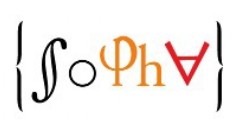Recent work in linguistics logically motivates the syntactic unacceptability of some linguistic constructions, suggesting that speakers judge a word-sequence as ungrammatical or ill-formed when it results to be always false or always true (Gajewski 2002, 2009; Fox & Hackl 2006; Chierchia 2013, 2021; Abrusán 2014; Del Pinal 2019, 2021). In this line of research, there are pervasive references to the concept of logical form. But what is meant here by logical form? How much logical is the form they are referring to?
A first approach (Gajewski 2002, 2009) takes as a reference neither the Logical Form (LF) to which linguists are traditionally accustomed, nor the logical form of logicians. Reference is made instead to a modified LF, called «logical skeleton» (LS), where all nonlogical/lexical material has been nonuniformly replaced by a new variable of the same semantic type.
A more recent approach (Del Pinal 2019, 2021) rejects logical skeleta and reverts to the usual LF, which recognises multiple occurrences of the same nonlogical item and is currently understood as a syntactic representation. It is then assumed that the meaning of nonlogical items can be modulated via Rescale––hence, we can label this approach LF+Rescale.
I am going to argue that both LS and LF+Rescale have shortcomings. On the one hand, logical skeleta are radically underspecified with respect to their nonlogical content, as a result logical properties are really exhibited only at a different level of representation, where the relations of identity or difference between nonlogical items are recovered. On the other hand, LF+Rescale is supposed to be a syntactic representation which exhibits semantic properties (entailment) via a pragmatic mechanism (meaning modulation), but there seems to be no exclusive syntactic representation of the relevant linguistic construction, thus undermining its intrinsicalism.
References
Abrusán M., 2014, Weak Island Semantics, Oxford, Oxford University Press.
Chierchia G., 2013, Logic in Grammar: Polarity, Free Choice, and Intervention, Oxford, Oxford University Press.
Chierchia G., 2021, «On Being Trivial: Grammar vs. Logic» in G. Sagi, J. Woods (eds.), The Semantic Conception of Logic, Cambridge (MA), Cambridge University Press, pp. 227–248.
Del Pinal G., 2019, «The Logicality of Language: A New Take on Triviality, “Ungrammaticality”, and Logical Form», Noûs, 53, 4, pp. 785–818.
Del Pinal G., 2021, «The Logicality of Language: Contextualism vs. Semantic Minimalism», Manuscript, University of Illinois.
Fox D. & M. Hackl, 2006, «The Universal Density of Measurement», Linguistics and Philosophy, 29, 5, pp. 537–586.
Gajewski J., 2002, «L-analyticity and Natural Language», Manuscript, MIT.
Gajewski J., 2009, «L-triviality and Grammar», Handout, UConn Logic Group.
García-Carpintero M., 2004, «Logical form: Syntax and semantics» in A. Coliva & E. Picardi (eds.), Wittgenstein today, Il Poligrafo, pp. 63–87.
Iacona A., 2013, «Logical form and truth conditions», Theoria, 28, pp. 439–457.
Iacona A., 2016, «Two notions of logical form», Journal of Philosophy, 113, pp. 617–643.
Iacona A., 2018, Logical Form: Between Logic and Natural Language, Springer.
Stanley J., 2000, «Context and Logical Form», Linguistics and Philosophy, 23, 4, pp. 391–434.

 PDF version
PDF version
